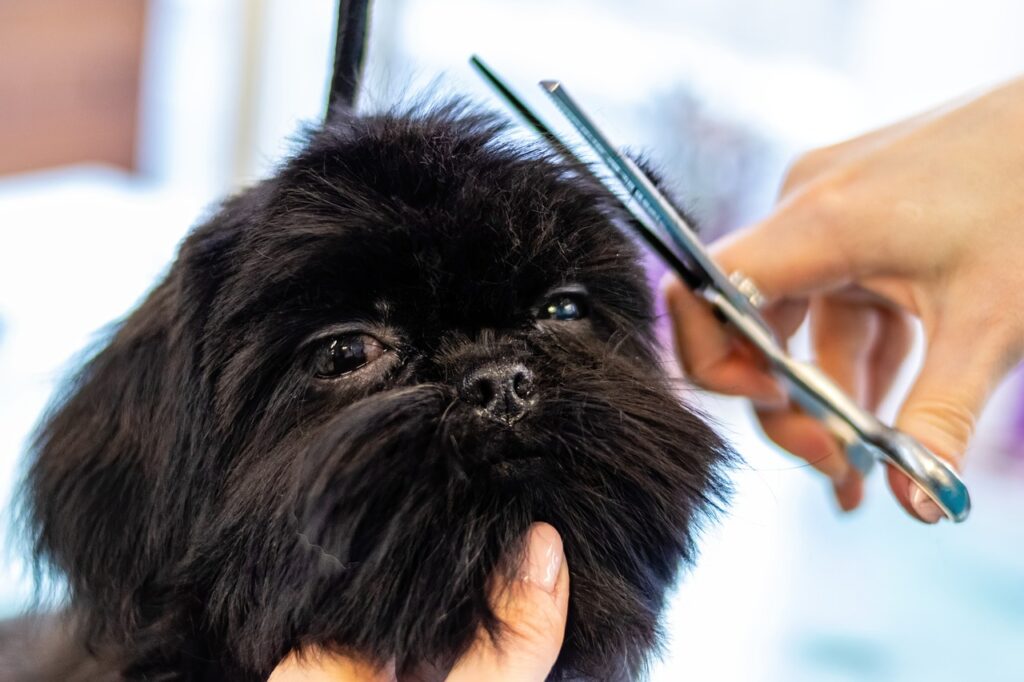Dog grooming is an essential part of maintaining your furry friend’s health and happiness. Regular grooming not only keeps your dog looking good but also plays a crucial role in preventing skin infections, matting, and other health issues. By mastering the art of dog grooming, pet owners can ensure their four-legged companions remain comfortable, clean, and well-groomed. In this article, we will explore various techniques, tips, and tricks that every pet owner should know to become a proficient dog groomer.
Why is Dog Grooming Important?
Regular grooming not only enhances your dog’s appearance but also has several health benefits. Grooming promotes healthy skin and coat by removing dirt, dead hair, and dandruff. It also allows you to check for any abnormalities, such as ticks, fleas, or skin irritations. Moreover, grooming sessions provide an opportunity for bonding and building trust with your furry companion.
Essential Grooming Supplies:
To get started with dog grooming, it’s important to have the right supplies. Some essential grooming tools include:
1. Dog brush or comb suitable for your dog’s coat type
2. Dog shampoo and conditioner
3. Towels or a pet dryer
4. Nail clippers or grinder
5. Ear cleaning solution and cotton balls
6. Dog-specific toothbrush and toothpaste
7. Styptic powder for potential nail bleeding
8. Grooming scissors (optional)
Brushing and Combing Techniques:
Regular brushing and combing help prevent matting, remove loose hair, and distribute natural oils throughout your dog’s coat. The technique and frequency of brushing depend on your dog’s breed and coat type. For long-haired breeds, use a slicker brush or comb to gently untangle any mats. Short-haired breeds can be brushed with a rubber curry brush or grooming mitt to remove loose hair efficiently.
Bathing and Drying Tips:
Bathing your dog is an essential part of grooming, but it’s important to do it correctly to avoid skin irritation or drying out their coat. Use lukewarm water and a dog-specific shampoo to thoroughly wet and lather your dog’s coat. Rinse thoroughly, ensuring no shampoo residue is left behind. After bathing, gently towel-dry your dog or use a pet dryer on a low, cool setting.
Nail Trimming Made Easy:
Trimming your dog’s nails can be a daunting task, but with practice and proper techniques, it can be made easier. Use a pair of dog nail clippers or a grinder to carefully trim the tip of the nail, avoiding the quick (the sensitive part of the nail that contains blood vessels). If you accidentally cut the quick and it bleeds, apply styptic powder to stop the bleeding. Regular nail trims prevent overgrowth and discomfort for your dog.
Dental Care for Dogs:
Many pet owners often overlook dental care, yet it is crucial for your dog’s overall health. Brushing your dog’s teeth regularly using a dog-specific toothbrush and toothpaste can help prevent plaque buildup, gum disease, and bad breath. Introduce dental care gradually to allow your dog to get used to the process.
Dealing with Shedding:
Shedding is a natural process for most dogs, but excessive shedding can be managed with proper grooming techniques. Regular brushing helps remove loose hair and reduces shedding around the house. Use a de-shedding tool or a grooming mitt to reach the undercoat and remove excess hair.
How to Handle Ear and Eye Care:
Proper ear and eye care are important aspects of dog grooming. Use a dog-specific ear cleaning solution to gently clean your dog’s ears, being careful not to go too deep. Check for any signs of redness, discharge, or foul odor, which could indicate an infection. For eye care, gently wipe away any discharge using a clean, damp cloth. If you notice excessive tearing, redness, or swelling, consult a veterinarian.
Grooming Different Dog Breeds:
Different dog breeds have unique grooming needs. Dogs with long, silky coats, such as Shih Tzus or Yorkshire Terriers, require daily brushing to prevent matting. Breeds with wiry or curly hair, such as Poodles or Bichon Frises, often need professional grooming to maintain their specific cuts. Research your dog’s breed-specific grooming requirements to ensure you provide the best care.
Frequently Asked Questions (FAQs):
Q1: How often should I groom my dog?
A1: The frequency of grooming depends on your dog’s breed, coat type, and activity level. Generally, most dogs benefit from brushing at least once a week, with bathing every 4-8 weeks.
Q2: Can I use human shampoo on my dog?
A2: No, human shampoo can disrupt the pH balance of your dog’s skin. Always use a dog-specific shampoo that is gentle and formulated for their specific needs.
Q3: How can I make grooming a positive experience for my dog?
A3: Introduce grooming gradually and use positive reinforcement techniques, such as treats or praise, to create a positive association. Start with short grooming sessions and gradually increase the duration.
Q4: Can I groom my dog at home, or should I seek professional help?
A4: Basic grooming tasks like brushing, bathing, and nail trimming can be done at home with the right tools and techniques. However, for certain breed-specific cuts or if you feel uncomfortable with certain grooming tasks, seeking professional help is recommended.
Conclusion:
Mastering the art of dog grooming is a valuable skill that every pet owner should strive to achieve. By following the techniques and tips discussed in this article, you can ensure your dog remains clean, healthy, and comfortable. Remember, grooming sessions also provide an opportunity for bonding and strengthening your relationship with your furry companion. So, grab your grooming tools, be patient, and enjoy the rewarding experience of grooming your beloved dog!

